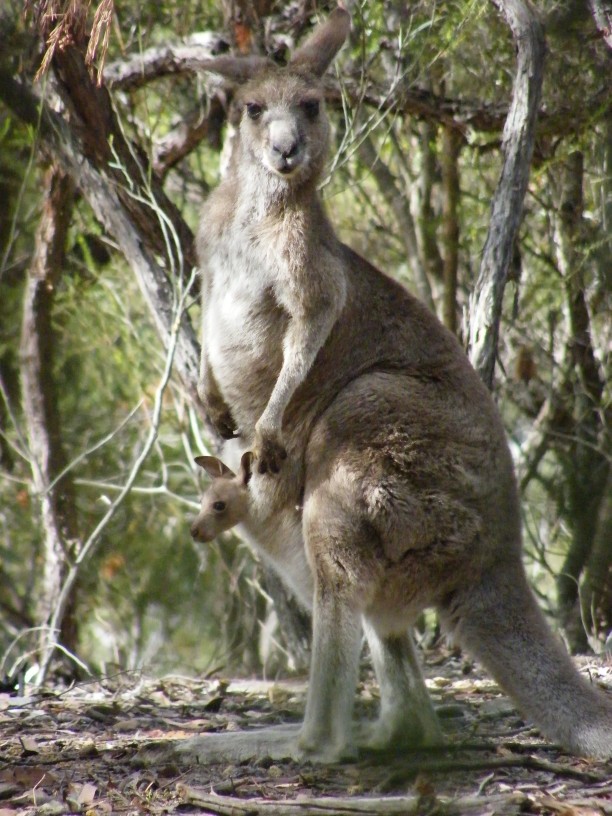Eastern Grey Kangaroo
Other common names for this kangaroo are Great Grey Kangaroo, Scrub Kangaroo and the Forester.
Eastern Grey Kangaroos ~ Macropus giganteus
These kangaroos can be found throughout the majority of Queensland, NSW and Victoria and can also be found in eastern regions of Tasmania. They are found in habitats ranging from semi-arid scrubland to woodland and forest.
Kangaroos are predominantly grazers, favouring grass as their main source of food.
When kangaroos are hot or stressed they will lick their forearms as a cooling mechanism. In the forearms there are networks of blood vessels that rise to the surface of the skin in warmer temperatures, by licking the forearms it cools the kangaroo.
Breeding occurs throughout the year however most births are in the summer months.
The young kangaroo will stay in its mother’s pouch until it is about 9 months of age. It will stay close to its mother suckling up until it is approximately 18 months of age.
The mother kangaroo can have an emerged joey at foot and also have a young joey in the pouch at the same time each suckling from its own teat.
Aborigines used to kill kangaroos for their skins and for their meat.
When they sense danger they will thump on the ground to warn other mob members of the possible danger.
Eastern Grey Kangaroos are large and grey in colour. Large males can reach weights of up to 66kg and females are smaller, weighing up to 32kg.
The Eastern Grey kangaroos at AWWP are mostly active in the late afternoon and early morning hours of the day when the temperature is at its coolest. During the warmest parts of the day they can be found resting under trees and in other shady areas such as on the deck of our visitor centre.
At AWWP we have many Eastern Grey Kangaroos and a few that have been hand raised so they think they are human.
They enjoy sitting on the deck of the visitor centre having a snooze or socialising with our visitors.

